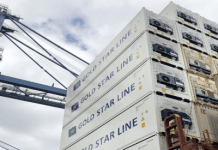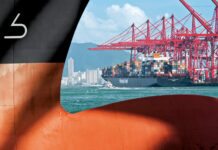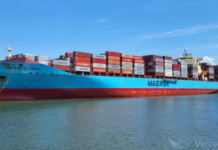
The Biden-Harris Administration is set to issue an Executive Order aimed at bolstering the security of the US ports, accompanied by a series of additional measures to enhance maritime cybersecurity, reinforce supply chains, and bolster the United States’ industrial base.
Furthermore, the Administration will announce its intention to bring domestic manufacturing capacity back to America, ensuring the provision of safe and secure cranes to U.S. ports through an investment of over US$20 billion in US port infrastructure under President Biden’s Investing in America Agenda.
Gene Seroka, executive director of the Port of Los Angeles, sits down with Yahoo Finance to delve into the Port’s ongoing initiatives, the forthcoming investment from the Biden administration, and future cybersecurity improvements for ports.
When asked why so many Chinese cranes already existed in US Ports, Seroka answers: “We’ve shipped manufacturing overseas the past 45 to 50 years. Cranes, chassis wheels that move our containers around as well as those container boxes. We don’t make that or any of those products in the United States. Part of the efforts of people like Secretary Gina Raimondo at Commerce and others is to try to reshore near-shore some of the manufacturing so we can tighten up the supply chains and help American companies grow.”
Moreover, the initiatives of 21 February exemplify the President’s commitment to investing in America, securing the nation’s supply chains, and enhancing the cybersecurity of critical infrastructure against modern-day threats — priorities that have been at the forefront of his Administration since taking office.
According to a statement, the prosperity of America is complexly tied to maritime trade and the interconnected network of ports, terminals, vessels, waterways, and land-side connections that form the Nation’s Marine Transportation System (MTS). This complex system facilitates US$5.4 trillion worth of economic activity annually, employs over 31 million Americans, and supports nearly 95% of cargo entering the U.S.
Also, MTS owners and operators rely heavily on digital systems for various operations, including ship navigation, cargo movement, engineering, safety, and security monitoring. While these systems have revolutionized the maritime shipping industry and American supply chains by enhancing speed and efficiency, they have also introduced vulnerabilities due to the growing digital interconnectedness of our economy and supply chains. If exploited, these vulnerabilities could have far-reaching impacts on America’s ports, the economy, and the livelihoods of everyday hard-working Americans.





